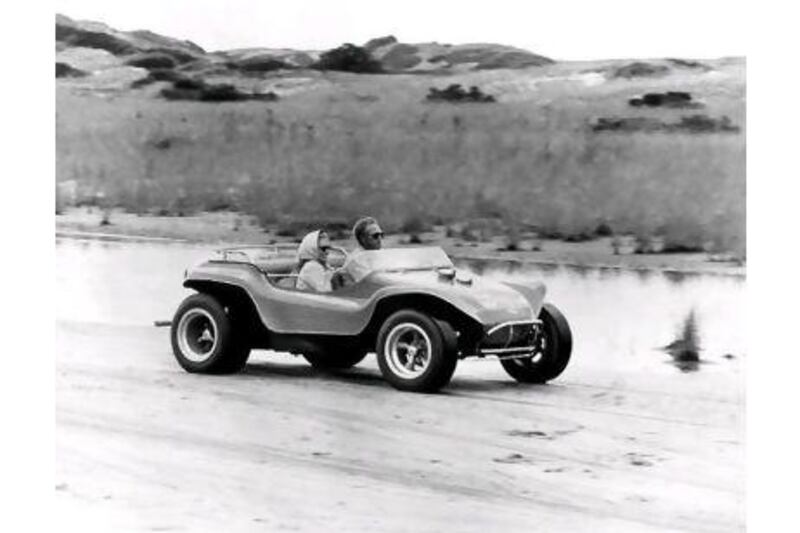More often that not these days, a car advert features a bespectacled geek in a white lab coat noting the technical brilliance of his design on a clipboard. But how fun can a car be that is the brainchild of someone who would rather spend a secluded hour attempting to solve the Poincaré conjecture than playing a game of footy with his mates? What unbridled joy and euphoric enjoyment it would be to drive a car designed by a surfer rather than a scientist. That was the simple genius of the Meyers Manx, surely the most fun can ever made.
It was the 1960s and America's youth were leaving the starched conservatism of the cities behind for the freedom and fun of golden expanses of sand with the tunes of the Beach Boys ringing in their ears. They didn't want the sophistication of a sedan or the space of an estate car. They had neither kids to lug around or a job to commute to. All they wanted was fun, fun, fun and if Daddy took the T-Bird away and left them a Manx, then that was fine by them.
If ever there was a car designer that captured the mood of the time it was Bruce Meyers. Had he been born in Coventry rather than California perhaps he would have designed a snore-inducing saloon. But growing up in a paradise of sun, sea and sand, he was inspired to create something truly different - a car that put fun before functionality.
After serving in the US navy, Meyers sailed the South Pacific and began making catamarans from fibreglass. The use of this light, durable material was key to the success of his dune buggy as it was light enough to be thrillingly fast, even with a modest engine, and durable enough to crash and bump over the beach.
The car was launched in 1964 to great excitement. It was based on Beetle running gear but with a shortened chassis and a moulded shell open to the elements, giving the driver the wild sensation of driving in a go-kart or jeep. Its bug eyes and sloping bonnet gave it a fun, playful style that belied the robustness of construction. Given that it looked more like a Tonka toy than a race car, it is amazing to think that Meyers himself drove a Manx to victory in the gruelling Mexico 1000 race across rugged desert terrain. Being so light, it enjoyed neck-jerking acceleration and its off-road performance far outclassed its rivals. And while kids have a tendency of breaking their toys, Meyers insured that the adult version was virtually indestructible. After all, with no roof, doors or boot, there wasn't much to break.
The car was an instant cult classic and was the puppy-faced pin-up of all the major motor magazines. Interest was fuelled further when a modified Manx driven by Steve McQueen appeared in a thrilling beach sequence in the uber-cool film The Thomas Crown Affair. Demand was so great that Meyers struggled to keep up with the orders that flooded in. And this, regrettably, provided an opportunity for others.
Seeing the popularity of the dune buggy and the relative ease of design and construction, rival manufacturers raced to get their own models on the market. In fact, the Manx must go down in history as the most imitated car design, with about 300 manufacturers producing near-identical models. Meyers only made 6,000 cars but it is estimated that more than a quarter of a million dune buggies have been produced. Dismayed by the loss of identity and no doubt profits for his Manx, Meyers campaigned in the courts to get his patent recognised, but was unsuccessful. Though the brand was respected, his many rivals were offering similar cars at half the cost and a frustrated Meyers eventually threw in the towel.
But in 2000, at the age of 74, Meyers revived his iconic design and now the company offer several models for a new generation. So fresh was the original design that the only change in three decades was the introduction of a curved windscreen.
In many ways, the Manx was the original SUV and, even after four decades, in a class that has become the most competitive in the market, it remains the purest, most smile-beamingly fun example ever to hit the road - or the beach.
The dune buggy was a child of the sixties and a child of the sixties now has the opportunity to drive one.






